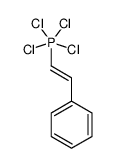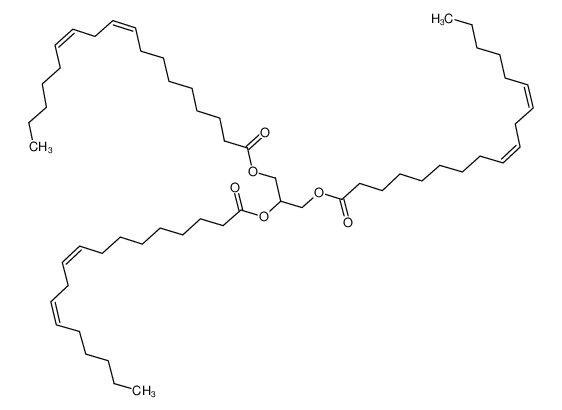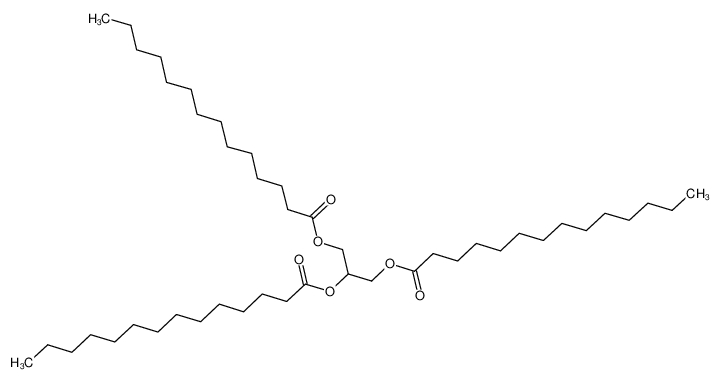1.Identification
1.1 GHS Product identifier
| Product name | 1,2,3-Trichloropropane |
|---|
1.2 Other means of identification
| Product number | - |
|---|---|
| Other names | Propane, 1,2,3-trichloro- |
1.3 Recommended use of the chemical and restrictions on use
| Identified uses | For industry use only. Volatile organic compounds |
|---|---|
| Uses advised against | no data available |
1.4 Supplier's details
| Company | MOLBASE (Shanghai) Biotechnology Co., Ltd. |
|---|---|
| Address | Floor 4 & 5, Building 12, No. 1001 North Qinzhou Road, Xuhui District, Shanghai, China |
| Telephone | +86(21)64956998 |
| Fax | +86(21)54365166 |
1.5 Emergency phone number
| Emergency phone number | +86-400-6021-666 |
|---|---|
| Service hours | Monday to Friday, 9am-5pm (Standard time zone: UTC/GMT +8 hours). |
2.Hazard identification
2.1 Classification of the substance or mixture
Acute toxicity - Oral, Category 4
Acute toxicity - Dermal, Category 4
Acute toxicity - Inhalation, Category 4
Carcinogenicity, Category 1B
Reproductive toxicity, Category 1B
2.2 GHS label elements, including precautionary statements
| Pictogram(s) |   |
|---|---|
| Signal word | Danger |
| Hazard statement(s) | H302 Harmful if swallowed H312 Harmful in contact with skin H332 Harmful if inhaled H350 May cause cancer |
| Precautionary statement(s) | |
| Prevention | P264 Wash ... thoroughly after handling. P270 Do not eat, drink or smoke when using this product. P280 Wear protective gloves/protective clothing/eye protection/face protection. P261 Avoid breathing dust/fume/gas/mist/vapours/spray. P271 Use only outdoors or in a well-ventilated area. P201 Obtain special instructions before use. P202 Do not handle until all safety precautions have been read and understood. |
| Response | P301+P312 IF SWALLOWED: Call a POISON CENTER/doctor/…if you feel unwell. P330 Rinse mouth. P302+P352 IF ON SKIN: Wash with plenty of water/... P312 Call a POISON CENTER/doctor/…if you feel unwell. P321 Specific treatment (see ... on this label). P362+P364 Take off contaminated clothing and wash it before reuse. P304+P340 IF INHALED: Remove person to fresh air and keep comfortable for breathing. P308+P313 IF exposed or concerned: Get medical advice/ attention. |
| Storage | P405 Store locked up. |
| Disposal | P501 Dispose of contents/container to ... |
2.3 Other hazards which do not result in classification
none
3.Composition/information on ingredients
3.1 Substances
| Chemical name | Common names and synonyms | CAS number | EC number | Concentration |
|---|---|---|---|---|
| 1,2,3-Trichloropropane | 1,2,3-Trichloropropane | 96-18-4 | none | 100% |
4.First-aid measures
4.1 Description of necessary first-aid measures
General advice
Consult a physician. Show this safety data sheet to the doctor in attendance.
If inhaled
Fresh air, rest. Refer immediately for medical attention.
In case of skin contact
Remove contaminated clothes. Rinse skin with plenty of water or shower. Refer for medical attention if skin irritation occurs.
In case of eye contact
Rinse with plenty of water for several minutes (remove contact lenses if easily possible). Refer for medical attention.
If swallowed
Rinse mouth. Do NOT induce vomiting. Give one or two glasses of water to drink. Refer immediately for medical attention.
4.2 Most important symptoms/effects, acute and delayed
Inhalation of vapor causes anesthesia, dizziness, and nausea. Vapor is highly irritating by inhalation routes and moderately irritating by dermal routes. Exposure of eyes to vapor may result in slight, transient injury to the cornea. (USCG, 1999)
4.3 Indication of immediate medical attention and special treatment needed, if necessary
/SRP:/ Immediate first aid: Ensure that adequate decontamination has been carried out. If patient is not breathing, start artificial respiration, preferably with a demand valve resuscitator, bag-valve-mask device, or pocket mask, as trained. Perform CPR if necessary. Immediately flush contaminated eyes with gently flowing water. Do not induce vomiting. If vomiting occurs, lean patient forward or place on left side (head-down position, if possible) to maintain an open airway and prevent aspiration. Keep patient quiet and maintain normal body temperature. Obtain medical attention. /Halogenated Aliphatic Hydrocarbons and Related Compounds/
5.Fire-fighting measures
5.1 Extinguishing media
Suitable extinguishing media
Suitable extinguishing media: Use water spray, alcohol-resistant foam, dry chemical or carbon dioxide.
5.2 Specific hazards arising from the chemical
Special Hazards of Combustion Products: Highly toxic chloride fumes including hydrochloric acid. Behavior in Fire: It burns and produces highly toxic chloride fumes. (USCG, 1999)
5.3 Special protective actions for fire-fighters
Wear self-contained breathing apparatus for firefighting if necessary.
6.Accidental release measures
6.1 Personal precautions, protective equipment and emergency procedures
Use personal protective equipment. Avoid dust formation. Avoid breathing vapours, mist or gas. Ensure adequate ventilation. Evacuate personnel to safe areas. Avoid breathing dust. For personal protection see section 8.
6.2 Environmental precautions
Personal protection: filter respirator for organic gases and vapours adapted to the airborne concentration of the substance. Do NOT let this chemical enter the environment. Collect leaking liquid in sealable containers. Absorb remaining liquid in sand or inert absorbent. Then store and dispose of according to local regulations.
6.3 Methods and materials for containment and cleaning up
ACCIDENTAL RELEASE MEASURES: Personal precautions, protective equipment and emergency procedures: Wear respiratory protection. Avoid breathing vapors, mist or gas. Ensure adequate ventilation. Remove all sources of ignition. Evacuate personnel to safe areas. Beware of vapors accumulating to form explosive concentrations. Vapors can accumulate in low areas; Environmental precautions: Prevent further leakage or spillage if safe to do so. Do not let product enter drains. Discharge into the environment must be avoided; Methods and materials for containment and cleaning up: Contain spillage, and then collect with an electrically protected vacuum cleaner or by wet-brushing and place in container for disposal according to local regulations. Keep in suitable, closed containers for disposal.
7.Handling and storage
7.1 Precautions for safe handling
Avoid contact with skin and eyes. Avoid formation of dust and aerosols. Avoid exposure - obtain special instructions before use.Provide appropriate exhaust ventilation at places where dust is formed. For precautions see section 2.2.
7.2 Conditions for safe storage, including any incompatibilities
Separated from powdered metals and food and feedstuffs. Cool. Keep in a well-ventilated room. Store in an area without drain or sewer access.Keep container tightly closed in a dry and well-ventilated place. Containers which are opened must be carefully resealed and kept upright to prevent leakage. Storage class (TRGS 510): Non-combustible, acute toxic Cat.3 / toxic hazardous materials or hazardous materials causing chronic effects
8.Exposure controls/personal protection
8.1 Control parameters
Occupational Exposure limit values
NIOSH considers 1,2,3-trichloropropane to be a potential occupational carcinogen.
NIOSH usually recommends that occupational exposures to carcinogens be limited to the lowest feasible concentration.
Recommended Exposure Limit: 10 Hour Time-Weighted Average: 10 ppm (60 mg/cu m), skin.
Biological limit values
no data available
8.2 Appropriate engineering controls
Handle in accordance with good industrial hygiene and safety practice. Wash hands before breaks and at the end of workday.
8.3 Individual protection measures, such as personal protective equipment (PPE)
Eye/face protection
Safety glasses with side-shields conforming to EN166. Use equipment for eye protection tested and approved under appropriate government standards such as NIOSH (US) or EN 166(EU).
Skin protection
Wear impervious clothing. The type of protective equipment must be selected according to the concentration and amount of the dangerous substance at the specific workplace. Handle with gloves. Gloves must be inspected prior to use. Use proper glove removal technique(without touching glove's outer surface) to avoid skin contact with this product. Dispose of contaminated gloves after use in accordance with applicable laws and good laboratory practices. Wash and dry hands. The selected protective gloves have to satisfy the specifications of EU Directive 89/686/EEC and the standard EN 374 derived from it.
Respiratory protection
Wear dust mask when handling large quantities.
Thermal hazards
no data available
9.Physical and chemical properties
| Physical state | Colorless to straw colored liquid with an acrid, chloroform-like odor. |
|---|---|
| Colour | Colorless liquid |
| Odour | Odor described as being quite similar to that of trichloroethylene or chloroform |
| Melting point/ freezing point | 17°C(lit.) |
| Boiling point or initial boiling point and boiling range | 156°C |
| Flammability | Class IIIA Combustible Liquid: Fl.P. at or above 60°C and below 93.33°C.Combustible. Gives off irritating or toxic fumes (or gases) in a fire. |
| Lower and upper explosion limit / flammability limit | Lower, 3.2% by volume (at 120°C); upper 12.6% by volume (at 150°C) |
| Flash point | 73°C(lit.) |
| Auto-ignition temperature | 303.89°C (USCG, 1999) |
| Decomposition temperature | no data available |
| pH | no data available |
| Kinematic viscosity | 2.5X10-4 Pa.s at 20°C |
| Solubility | In water:2 g/L (25 ºC) |
| Partition coefficient n-octanol/water (log value) | log Kow = 2.27 |
| Vapour pressure | 2 mm Hg at 20°C ; 4 mm Hg at 30°C |
| Density and/or relative density | 1.386 |
| Relative vapour density | 5.08 (Relative to Air) |
| Particle characteristics | no data available |
10.Stability and reactivity
10.1 Reactivity
no data available
10.2 Chemical stability
Stable under recommended storage conditions.
10.3 Possibility of hazardous reactions
Moderately flammable by heat, flames (sparks), or powerful oxidizers.The vapour is heavier than air.1,2,3-TRICHLOROPROPANE is sensitive to prolonged exposure to light. Sensitive to heat. May react with active metals, strong caustics and oxidizing agents. Attacks some plastics, rubber and some coatings .
10.4 Conditions to avoid
no data available
10.5 Incompatible materials
Incompatible materials: Strong oxidizing agents, strong bases, strong acids, aluminum, tin/tin oxides, zinc, magnesium.
10.6 Hazardous decomposition products
When heated to decomposition it yields highly toxic /chloride./
11.Toxicological information
Acute toxicity
- Oral: LD50 Rat oral 505 mg/kg
- Inhalation: LC50 Rat inhalation 3,000 mg/cu m for 4 hr
- Dermal: LD50 Rabbit percutaneous 2500 mg/kg (1.77 mL/kg)
Skin corrosion/irritation
no data available
Serious eye damage/irritation
no data available
Respiratory or skin sensitization
no data available
Germ cell mutagenicity
no data available
Carcinogenicity
Evaluation: There is inadequate evidence in humans for the carcinogenicity of 1,2,3-trichloropropane. There is sufficient evidence in experimental animals for the carcinogenicity of 1,2,3-trichloropropane. Overall evaluation: 1,2,3-Trichloropropane is probably carcinogenic to humans (Group 2A). In making the overall evaluation, the working group took into account the following evidence: (1) 1,2,3-Trichloropropane causes tumors at multiple sites and at high incidence in mice and rats. (2) The metabolism of 1,2,3-trichloropropane is qualitatively similar in human and rodent microsomes. (3) 1,2,3-Trichloropropane is mutagenic to bacteria and to cultured mammalian cells and binds to the DNA of animals treated in vivo.
Reproductive toxicity
no data available
STOT-single exposure
no data available
STOT-repeated exposure
no data available
Aspiration hazard
no data available
12.Ecological information
12.1 Toxicity
- Toxicity to fish: LC50; Species: Oncorhynchus mykiss (Rainbow trout); Concentration: 75 mg/L for 24 hr /Conditions of bioassay not specified in source examined
- Toxicity to daphnia and other aquatic invertebrates: /LC50/; Species: Daphnia magna (Water flea) neonate age <24 hr; Conditions: freshwater, renewal, 22.2°C (22-22.2°C), pH 8.23 (8.0-8.4), hardness 142.3 mg/L CaCO3 (125-176 mg/L CaCO3), alkalinity 96.2 mg/L CaCO3 (82-107 mg/L CaCO3), conductivity 348 umhos/cm (320-400 umhos/cm), dissolved oxygen 92.6% (90.7-92.7%); Concentration: 33800 ug/L for 48 hr (95% confidence interval: 27800-41100 ug/L) /99% pure
- Toxicity to algae: no data available
- Toxicity to microorganisms: no data available
12.2 Persistence and degradability
AEROBIC: 1,2,3-Trichloropropane, present at 100 ppm, reached 0% of its Theoretical BOD in 4 weeks using an activated sludge inoculum at 30 ppm in the Japanese MITI test(1). 1,2,3-Trichloropropane showed little degradation in an anaerobic serum bottle test over a 60 day period. It was one of 12 chlorinated aliphatic compounds (1-3 carbons) in the test mixture. Almost complete removal was obtained in a 7-day aerobic bottle test with methanogenic cultures, but not with phenol-adapted cultures(2).
12.3 Bioaccumulative potential
BCF values of 5.4-12 and 5.3-13 were calculated in fish for 1,2,3-trichloropropane at concentrations of 0.2 and 0.02 mg/L, respectively, using carp (Cyprinus carpio) which were exposed over an 8-week period(1). According to a classification scheme(2), these BCF values suggest the potential for bioconcentration in aquatic organisms is low(SRC).
12.4 Mobility in soil
The partition coefficient of the compound to Captina silt loam (pH 4.97, 1.49% OC) and McLaurin sandy loam (pH 4.43, 0.66% OC) soils were 1.41 and 0.508, respectively(1), corresponding to calculated Koc values are 95 and 77(SRC). According to a classification scheme(2), these Koc values suggest that 1,2,3-trichloropropane is expected to have high mobility in soil.
12.5 Other adverse effects
no data available
13.Disposal considerations
13.1 Disposal methods
Product
The material can be disposed of by removal to a licensed chemical destruction plant or by controlled incineration with flue gas scrubbing. Do not contaminate water, foodstuffs, feed or seed by storage or disposal. Do not discharge to sewer systems.
Contaminated packaging
Containers can be triply rinsed (or equivalent) and offered for recycling or reconditioning. Alternatively, the packaging can be punctured to make it unusable for other purposes and then be disposed of in a sanitary landfill. Controlled incineration with flue gas scrubbing is possible for combustible packaging materials.
14.Transport information
14.1 UN Number
| ADR/RID: UN2810 | IMDG: UN2810 | IATA: UN2810 |
14.2 UN Proper Shipping Name
| ADR/RID: TOXIC LIQUID, ORGANIC, N.O.S. |
| IMDG: TOXIC LIQUID, ORGANIC, N.O.S. |
| IATA: TOXIC LIQUID, ORGANIC, N.O.S. |
14.3 Transport hazard class(es)
| ADR/RID: 6.1 | IMDG: 6.1 | IATA: 6.1 |
14.4 Packing group, if applicable
| ADR/RID: III | IMDG: III | IATA: III |
14.5 Environmental hazards
| ADR/RID: no | IMDG: no | IATA: no |
14.6 Special precautions for user
no data available
14.7 Transport in bulk according to Annex II of MARPOL 73/78 and the IBC Code
no data available
15.Regulatory information
15.1 Safety, health and environmental regulations specific for the product in question
| Chemical name | Common names and synonyms | CAS number | EC number |
|---|---|---|---|
| 1,2,3-Trichloropropane | 1,2,3-Trichloropropane | 96-18-4 | none |
| European Inventory of Existing Commercial Chemical Substances (EINECS) | Listed. | ||
| EC Inventory | Listed. | ||
| United States Toxic Substances Control Act (TSCA) Inventory | Listed. | ||
| China Catalog of Hazardous chemicals 2015 | Listed. | ||
| New Zealand Inventory of Chemicals (NZIoC) | Listed. | ||
| Philippines Inventory of Chemicals and Chemical Substances (PICCS) | Listed. | ||
| Vietnam National Chemical Inventory | Not Listed. | ||
| Chinese Chemical Inventory of Existing Chemical Substances (China IECSC) | Listed. | ||
16.Other information
Information on revision
| Creation Date | Aug 12, 2017 |
|---|---|
| Revision Date | Aug 12, 2017 |
Abbreviations and acronyms
- CAS: Chemical Abstracts Service
- ADR: European Agreement concerning the International Carriage of Dangerous Goods by Road
- RID: Regulation concerning the International Carriage of Dangerous Goods by Rail
- IMDG: International Maritime Dangerous Goods
- IATA: International Air Transportation Association
- TWA: Time Weighted Average
- STEL: Short term exposure limit
- LC50: Lethal Concentration 50%
- LD50: Lethal Dose 50%
- EC50: Effective Concentration 50%
References
- IPCS - The International Chemical Safety Cards (ICSC), website: http://www.ilo.org/dyn/icsc/showcard.home
- HSDB - Hazardous Substances Data Bank, website: https://toxnet.nlm.nih.gov/newtoxnet/hsdb.htm
- IARC - International Agency for Research on Cancer, website: http://www.iarc.fr/
- eChemPortal - The Global Portal to Information on Chemical Substances by OECD, website: http://www.echemportal.org/echemportal/index?pageID=0&request_locale=en
- CAMEO Chemicals, website: http://cameochemicals.noaa.gov/search/simple
- ChemIDplus, website: http://chem.sis.nlm.nih.gov/chemidplus/chemidlite.jsp
- ERG - Emergency Response Guidebook by U.S. Department of Transportation, website: http://www.phmsa.dot.gov/hazmat/library/erg
- Germany GESTIS-database on hazard substance, website: http://www.dguv.de/ifa/gestis/gestis-stoffdatenbank/index-2.jsp
- ECHA - European Chemicals Agency, website: https://echa.europa.eu/






















-
-

-
-
-

-
-
-

-
-
-

-
-
-

-
-
-

-
-
-

-
-
-

-
-
-

-
-
-

-
More Suppliers>>JAPAN
Purity: 99%
Lead Time: 1 Week(s)
Price: -
Nanjing Yushan Chemical Co., Ltd.
CHINA
Purity: 98%
Lead Time: 3 Day(s)
Price: -
Hangzhou J&H Chemical Co., Ltd.
CHINA
Purity: 98%
Lead Time: 7 Day(s)
Price: -
Henan Coreychem Co.,Ltd
CHINA
Purity: 0.98%
Lead Time: 3 Day(s)
Price: -
Hangzhou DayangChem Co., Ltd
CHINA
Purity: 98%
Lead Time: 7 Day(s)
Price: -
Skyrun Industrial Co., Limited
CHINA
Purity: 99%
Lead Time: 7 Day(s)
Price: -
Shanghai darui finechem co.,ltd
CHINA
Purity: 98%
Lead Time: 1 Day(s)
Price: -
Hangzhou Bingochem Co., Ltd.
CHINA
Purity: 98%
Lead Time: 7 Day(s)
Price: -
CHINA
Purity: 99%
Lead Time: 3 Day(s)
Price: Min $100 /桶
Shanghai Civic Chemical Technology Co., Ltd.
CHINA
Purity: 98%
Lead Time: 7 Day(s)
Price: Min $14.5 /g